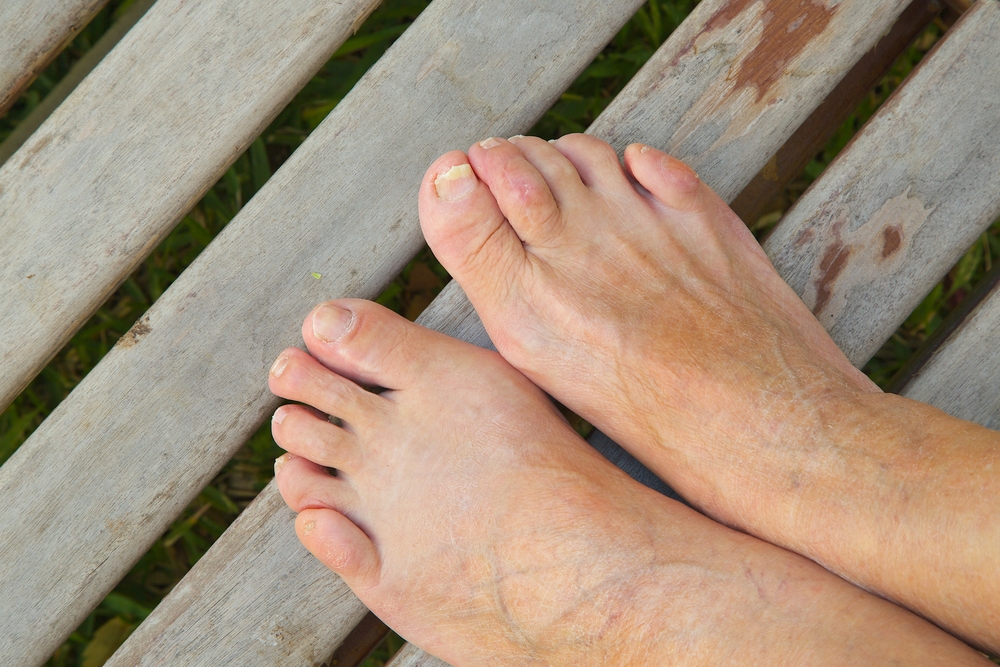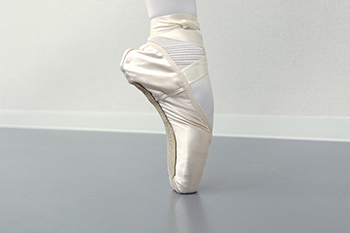

Moles typically appear as small, dark brown spots on the skin due to clusters of pigmented cells. They can be anywhere, including the soles of the feet. Moles can change over time or can vanish completely. While moles on the bottom of the feet can be uncomfortable, they are seldom serious, especially if they are small, one color, and are painless. If the mole becomes large, bumpy or has uneven edges, and is various shades of brown, medical attention should be sought. It is possible that a simple mole on the sole of the foot could be a melanoma. Signs that such a mole could be more serious is when it is of asymmetrical shape, has irregular borders, and varies in color. If you have a mole on the bottom of your foot, even if you think it is non-cancerous, it is suggested that you see a podiatrist for an examination. It is always better to be safe than sorry.
Foot Pain
Foot pain can be extremely painful and debilitating. If you have a foot pain, consult with Dr. Harris L. Klear from Burlington County Podiatry Associates. Our doctor will assess your condition and provide you with quality foot and ankle treatment.
Causes
Foot pain is a very broad condition that could be caused by one or more ailments. The most common include:
Diagnosis
To figure out the cause of foot pain, podiatrists utilize several different methods. This can range from simple visual inspections and sensation tests to X-rays and MRI scans. Prior medical history, family medical history, and any recent physical traumatic events will all be taken into consideration for a proper diagnosis.
Treatment
Treatment depends upon the cause of the foot pain. Whether it is resting, staying off the foot, or having surgery; podiatrists have a number of treatment options available for foot pain.
If you have any questions, please feel free to contact one of our offices located in Marlton and Delran, NJ . We offer the newest diagnostic and treatment technologies for all your foot care needs.

Hammertoe is certainly one of the peskiest conditions affecting the feet because it can make wearing shoes more uncomfortable. Hammertoe is defined by the jutting up of the middle joint of the toe, creating a shape that resembles a hammer. Since this creates a deformity in the shape of the shoe, it might be more difficult to wear shoes comfortably. Patients with hammertoe often need the help of a podiatrist in selecting shoes that will not aggravate this condition. Upon examining your specific condition, the podiatrist might recommend to you that you should be wearing shoes with larger toe boxes. By wearing this kind of shoe, the patient will essentially accommodate the peculiar toe shape by providing it with more space in the shoe. It is suggested that you contact a podiatrist and schedule an appointment for more information.
Hammertoe
Hammertoes can be a painful condition to live with. For more information, contact Dr. Harris L. Klear from Burlington County Podiatry Associates. Our doctor will answer any of your foot- and ankle-related questions.
Hammertoe is a foot deformity that affects the joints of the second, third, fourth, or fifth toes of your feet. It is a painful foot condition in which these toes curl and arch up, which can often lead to pain when wearing footwear.
Symptoms
Causes
Genetics – People who are genetically predisposed to hammertoe are often more susceptible
Arthritis – Because arthritis affects the joints in your toes, further deformities stemming from arthritis can occur
Trauma – Direct trauma to the toes could potentially lead to hammertoe
Ill-fitting shoes – Undue pressure on the front of the toes from ill-fitting shoes can potentially lead to the development of hammertoe
Treatment
Orthotics – Custom made inserts can be used to help relieve pressure placed on the toes and therefore relieve some of the pain associated with it
Medications – Oral medications such as anti-inflammatories or NSAIDs could be used to treat the pain and inflammation hammertoes causes. Injections of corticosteroids are also sometimes used
Surgery – In more severe cases where the hammertoes have become more rigid, foot surgery is a potential option
If you have any questions please contact one of our offices located in Marlton and Delran, NJ . We offer the newest diagnostic and treatment technologies for all your foot and ankle needs.

Pointe is a particular kind of ballet dance that is especially thrilling and challenging. Pointe dancers essentially put all of their weight on the tips of their toes. These dancers must wear special shoes to support this activity. Given the extraordinary nature of the type of dance, pointe dancers can consider performing special foot stretches. These foot stretches are ultimately meant to increase resilience in the feet and strengthen the muscles of the feet. A pointe dancer might consider warming up their feet by gently rolling out their feet with a tennis ball. This can be performed from a seated position and placing the tennis ball beneath each foot, one at a time. Also, from a seated position, you might consider strengthening the feet and ankle areas by pointing your toes and writing the alphabet with the foot in the air. If you are a pointe dancer, contact a podiatrist today.
Stretching the feet is a great way to prevent injuries. If you have any concerns with your feet consult with Dr. Harris L. Klear from Burlington County Podiatry Associates. Our doctor will assess your condition and provide you with quality foot and ankle treatment.
Stretching the Feet
Being the backbone of the body, the feet carry your entire weight and can easily become overexerted, causing cramps and pain. As with any body part, stretching your feet can serve many benefits. From increasing flexibility to even providing some pain relief, be sure to give your feet a stretch from time to time. This is especially important for athletes or anyone performing aerobic exercises, but anyone experiencing foot pain or is on their feet constantly should also engage in this practice.
Great ways to stretch your feet:
Individuals who tend to their feet by regular stretching every day should be able to minimize foot pain and prevent new problems from arising.
If you have any questions, please feel free to contact one of our offices located in Marlton and Delran, NJ . We offer the newest diagnostic and treatment technologies for all your foot care needs.

A broken toe is a foot injury that may or may not be severe. It can happen from jamming it into a piece of furniture, or from dropping a heavy object on it. A broken toe is considered to be severe if a bone is protruding from the skin. This often requires immediate medical attention, which also may help to prevent getting an infection. Some patients hear a snapping or popping sound with this type of fracture, and the intense pain can make it difficult to walk. Symptoms from a mildly broken toe often include bruising and swelling, which can make existing shoes difficult to wear. Effective treatment techniques can start out by having an X-ray taken, and this is successful in determining the severity of the fracture. Many broken toes are treated by using the buddy taping method. This is done by taping the affected toe to the toe next to it, which is generally adequate enough to provide the necessary stability as it heals. If you have broken your toe, please confer with a podiatrist who can provide you with tips on how your toe can heal properly.
Broken toes may cause a lot of pain and should be treated as soon as possible. If you have any concerns about your feet, contact Dr. Harris L. Klear from Burlington County Podiatry Associates. Our doctor will treat your foot and ankle needs.
What Is a Broken Toe?
A broken toe occurs when one or more of the toe bones of the foot are broken after an injury. Injuries such as stubbing your toe or dropping a heavy object on it may cause a toe fracture.
Symptoms of a Broken Toe
Although the injured toe should be monitored daily, it is especially important to have a podiatrist look at your toe if you have severe symptoms. Some of these symptoms include worsening or new pain that is not relieved with medication, sores, redness, or open wounds near the toe.
If you have any questions, please feel free to contact one of our offices located in Marlton and Delran, NJ . We offer the newest diagnostic and treatment technologies for all your foot care needs.